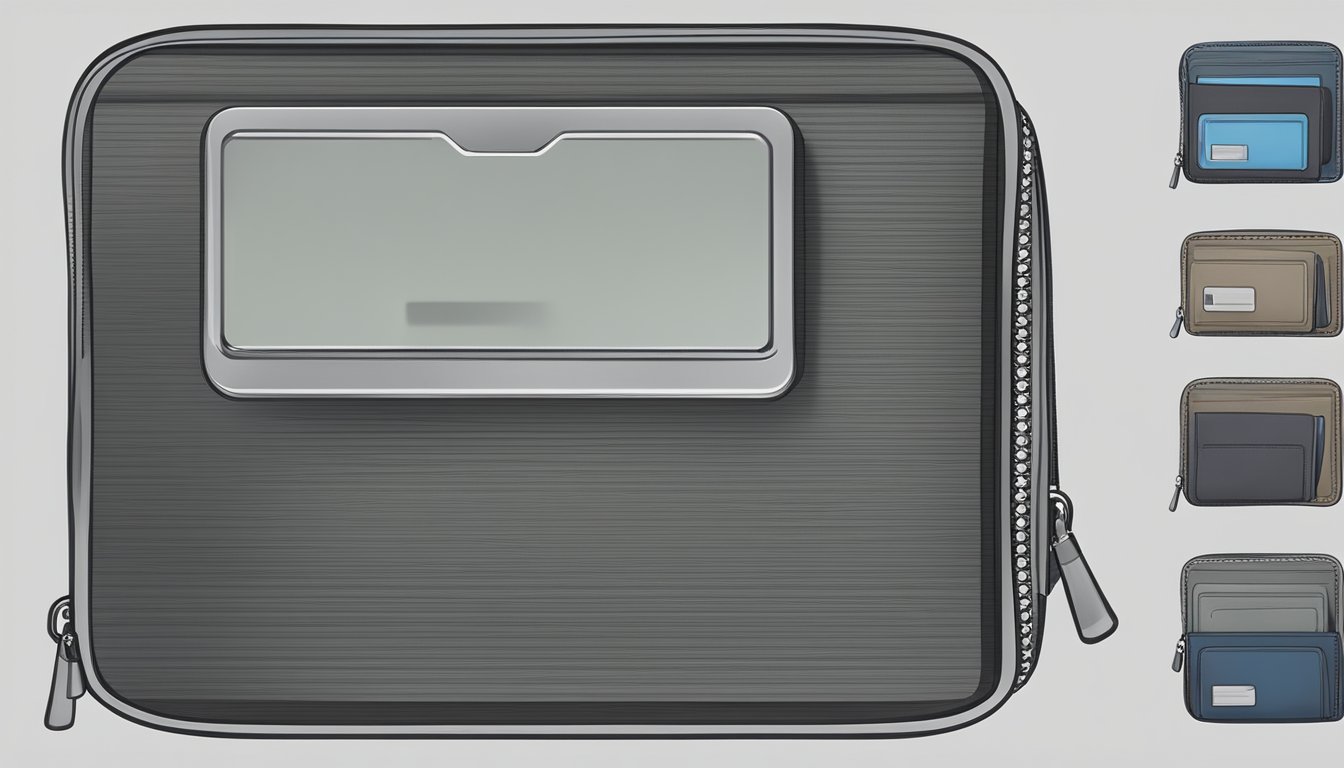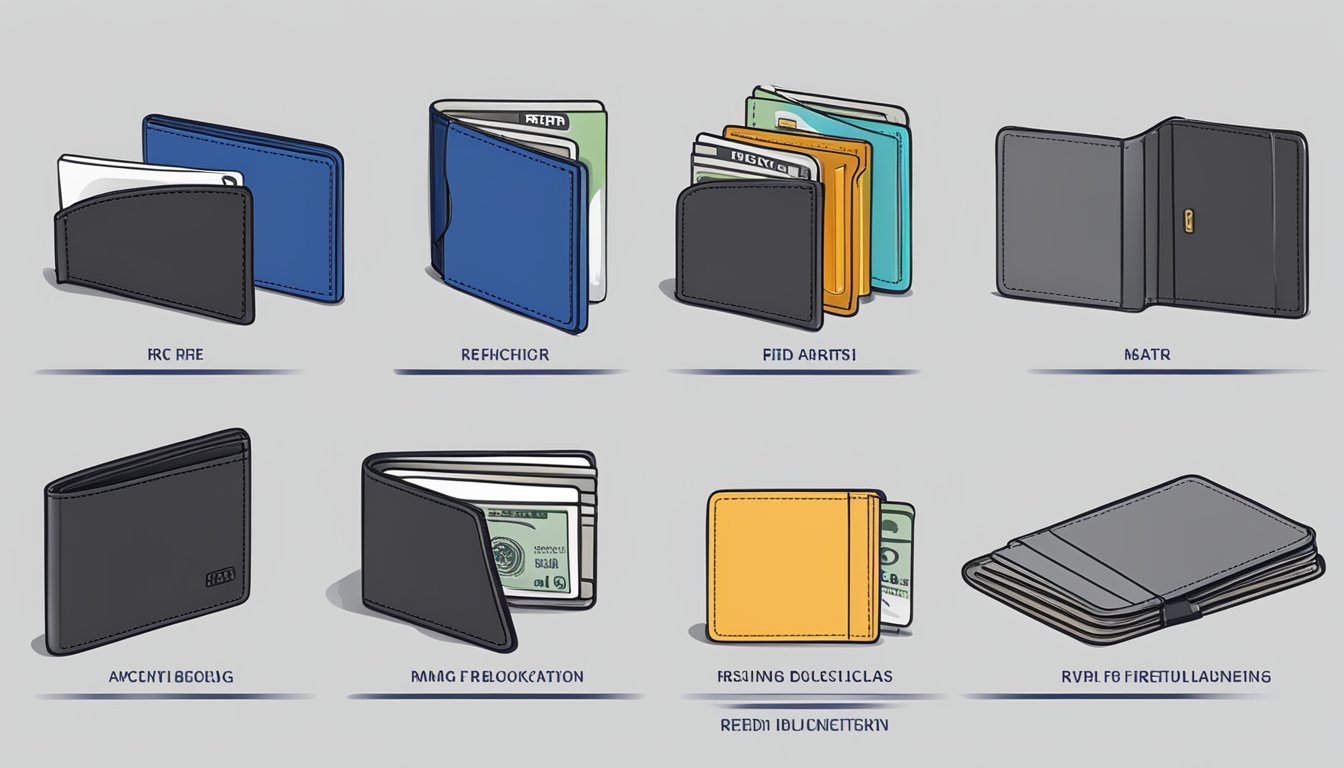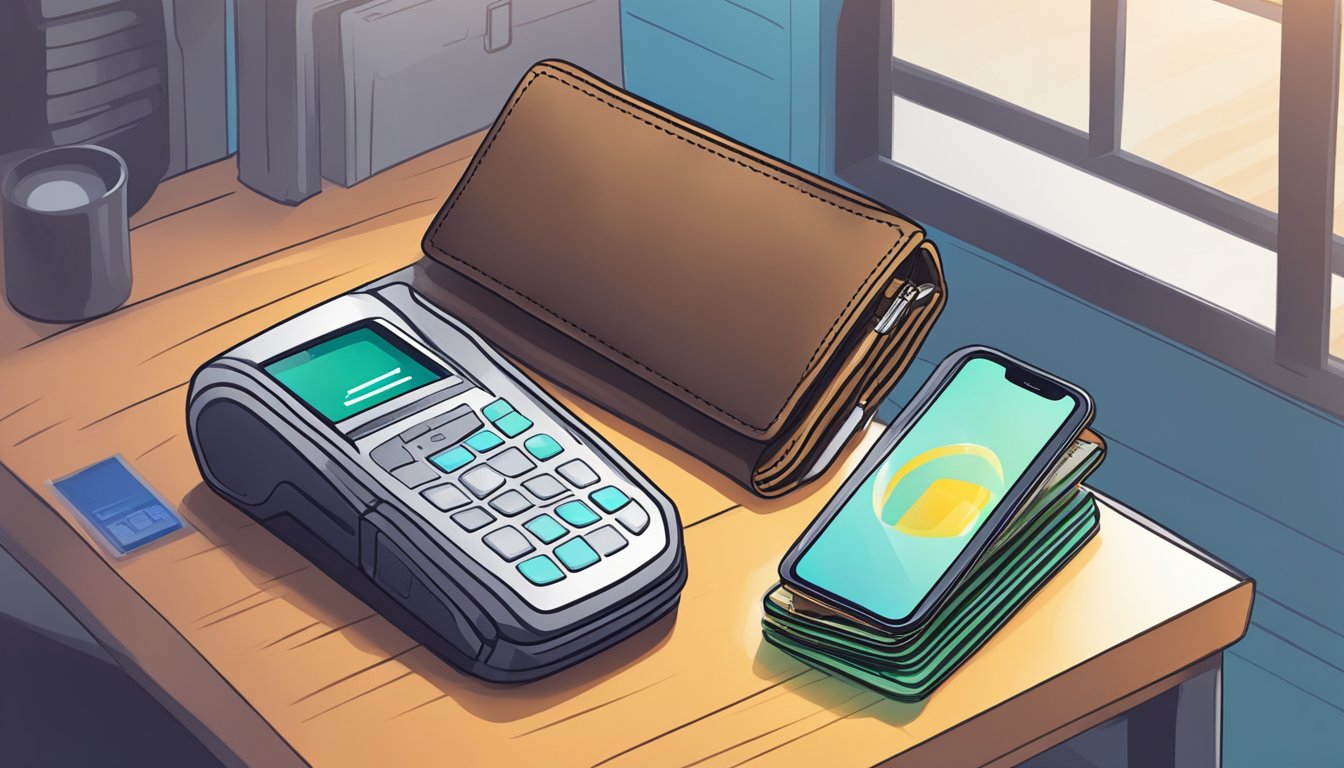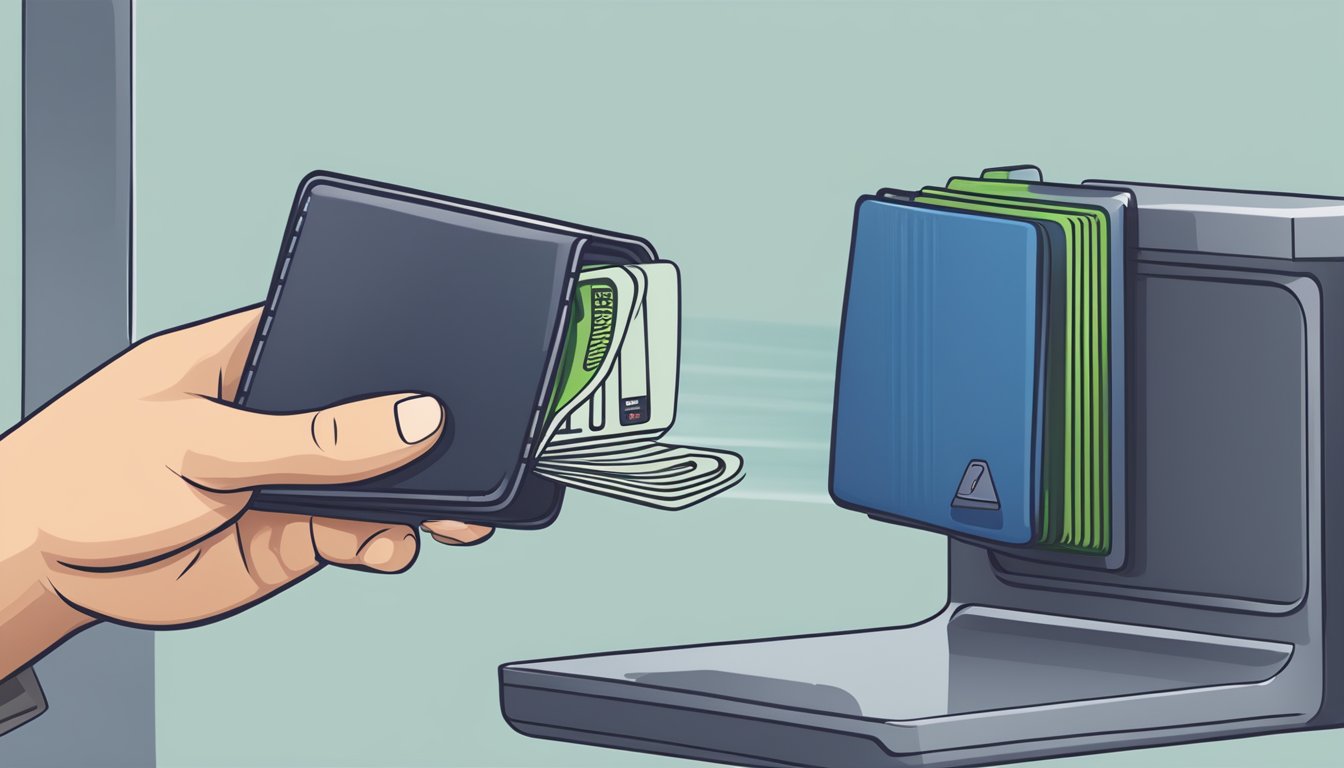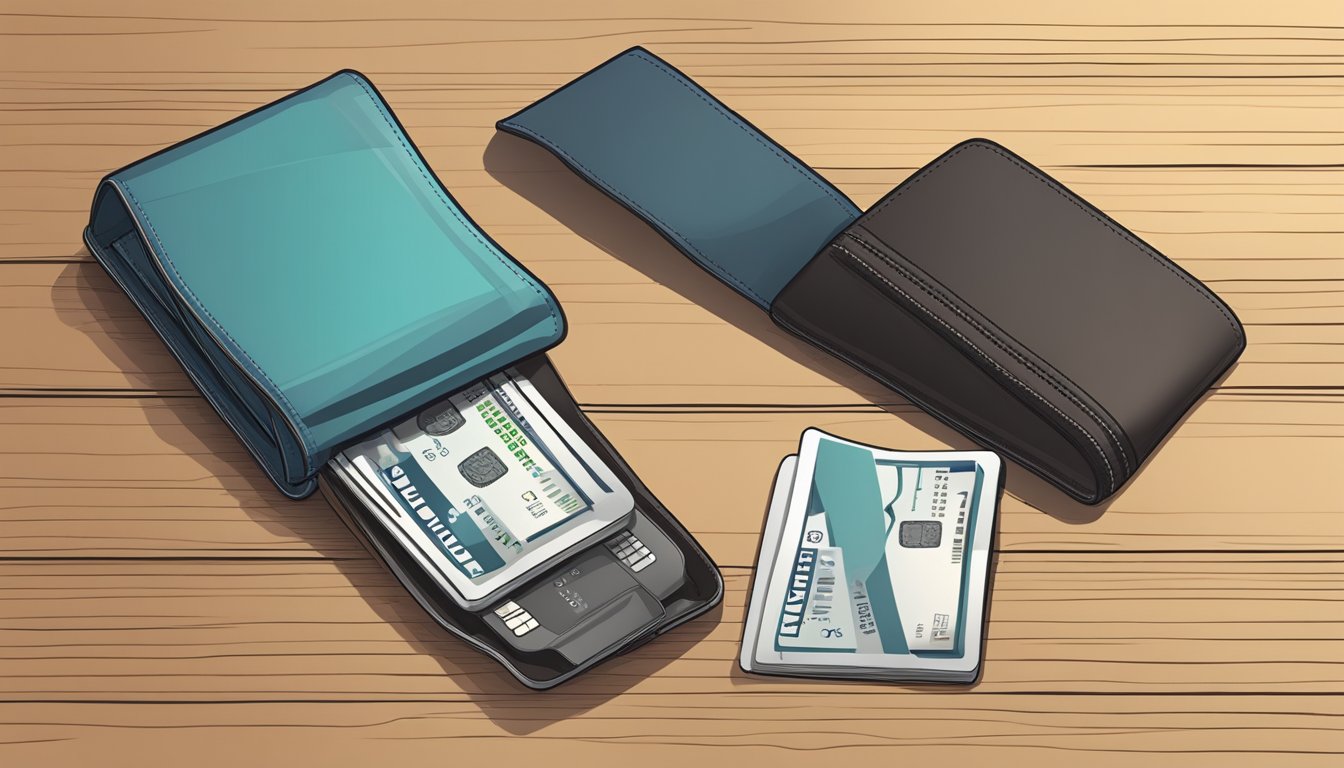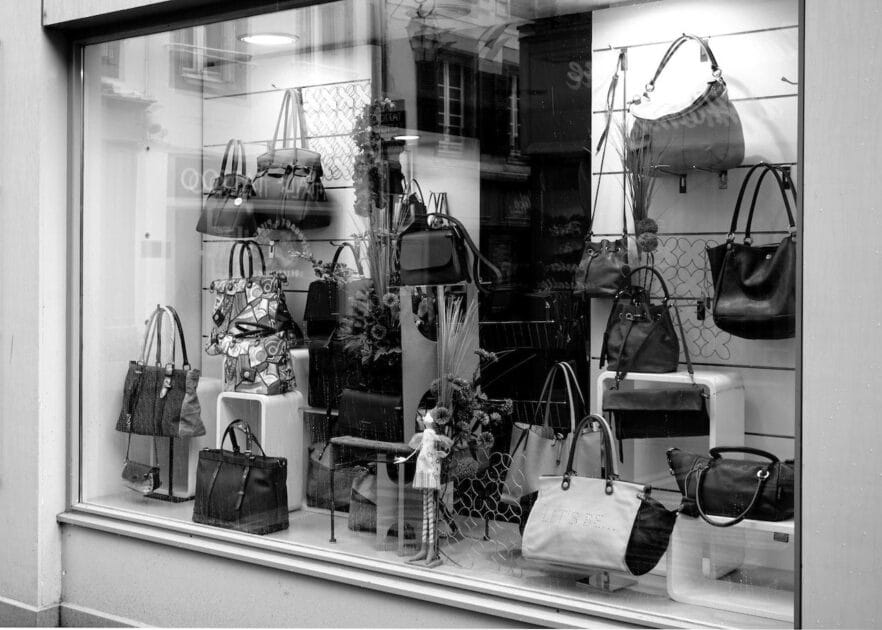If you’re concerned about the security of your personal information, it’s important to understand RFID technology and how it can be used to steal your data. Radio Frequency Identification (RFID) is a type of technology that uses radio waves to communicate information between a tag or label and a reader. While RFID technology has many useful applications, it can also be used by criminals to steal your credit card information without your knowledge.
One of the most common ways that criminals use RFID technology is by scanning credit cards or other items that contain RFID tags without your knowledge. This is known as RFID theft, and it can happen anywhere that you carry your cards. Fortunately, there are steps you can take to protect yourself from this type of theft. One of the most effective ways to do this is by using an RFID-blocking wallet.
Key Takeaways
- RFID technology uses radio waves to communicate information between a tag or label and a reader.
- Criminals can use RFID technology to steal your credit card information without your knowledge.
- One of the most effective ways to protect yourself from RFID theft is by using an RFID-blocking wallet.
Understanding RFID Technology

https://www.youtube.com/watch?v=Ukfpq71BoMo&embed=true
If you want to determine whether your wallet is RFID protected, it’s essential to understand the basics of RFID technology. RFID stands for Radio Frequency Identification, and it’s a wireless technology that uses radio waves to transmit signals between an antenna and a passive tag.
The passive tag contains a microchip that stores data, and an antenna that receives and transmits signals. When the tag is within range of the antenna, it sends a signal to the antenna, which then reads the data on the tag.
RFID technology is used in a variety of applications, including access control, inventory management, and payment systems. However, it’s also become a concern for security, as RFID theft is a growing problem.
To protect your personal information, you can use an RFID-blocking wallet that prevents the signals from being transmitted to the antenna. These wallets contain a special material that blocks the radio waves, and they’re becoming increasingly popular.
In summary, RFID technology is a wireless technology that uses radio waves to transmit signals between an antenna and a passive tag. To protect your personal information, you can use an RFID-blocking wallet that prevents the signals from being transmitted to the antenna.
RFID and Wallets
https://www.youtube.com/watch?v=l-hl9clVORQ&embed=true
If you’re concerned about the security of your RFID-enabled cards, you may be wondering whether your wallet is RFID-protected. RFID technology uses radio waves to communicate information between a card and a reader, allowing for quick and easy transactions. However, this also means that someone with an RFID reader could potentially steal your card information without ever touching your wallet.
One way to protect yourself is by using an RFID-protected wallet. These wallets are designed with special materials that block RFID signals, preventing anyone from reading your card information without your permission. If you’re not sure whether your wallet is RFID-protected, there are a few ways to find out.
First, check the label or product description. Many manufacturers will advertise the RFID-blocking technology on the packaging or online. If you can’t find any information, you can also try using an RFID reader and antenna to test your wallet. Simply put your credit cards inside your wallet and move it closer to the RFID scanner. If the scanner doesn’t receive any signals, your wallet is likely RFID-protected.
Another option is to use a separate card holder specifically designed for RFID-enabled cards. These holders are typically small and compact, making them easy to carry in your pocket or purse. They work by blocking the RFID signals, just like an RFID-protected wallet.
Overall, if you’re concerned about the security of your RFID-enabled cards, it’s worth investing in an RFID-protected wallet or card holder. By taking these simple steps, you can help ensure that your personal information stays safe and secure.
RFID and Credit Cards
https://www.youtube.com/watch?v=NKwJwOm3bfI&embed=true
Do you know that your credit and debit cards may contain RFID chips? RFID technology is used in many credit and debit cards to make contactless payments easier and faster. However, these chips can also make your cards vulnerable to theft and fraud.
RFID stands for Radio Frequency Identification. It is a technology that uses radio waves to transmit data wirelessly between a tag and a reader. In the case of credit and debit cards, the RFID chip contains your card information, such as your name, card number, and expiration date.
The problem with RFID chips is that they can be read by anyone with an RFID reader, even if they are not in close proximity to you. This means that someone could potentially steal your credit card information without even touching your wallet.
To prevent this from happening, you can look for wallets that are RFID-protected. These wallets have a special lining that blocks RFID signals from reaching your credit and debit cards. You can also use RFID-blocking sleeves or cardholders to protect individual cards.
Another way to test if your wallet or card has RFID protection is to use an RFID scanner. Simply place your card in the wallet or sleeve and hold it up to the scanner. If the scanner cannot read your card, then it is likely RFID-protected.
In summary, RFID technology is commonly used in credit and debit cards to make contactless payments faster and more convenient. However, it also makes your cards vulnerable to theft and fraud. To protect your information, look for RFID-protected wallets or use RFID-blocking sleeves or cardholders.
The Threat of RFID Theft
« How to Clean Your Thrift Store Purse: Tips and Tricks
Purse vs Tote: Choosing the Right Bag for Your Needs »
https://www.youtube.com/watch?v=Sn7VQgvXvTY&embed=true
As technology advances, so do the methods that criminals use to commit theft and identity theft. One such method is RFID theft, also known as RFID skimming. Criminals can use a device to read the information stored on your credit card’s RFID chip without physically touching it. This means that they can steal your credit card information without you even knowing it.
RFID theft is a real threat that you should be aware of. Criminals can use the information they steal from your credit card to make unauthorized purchases or even open new credit accounts in your name. This can lead to financial loss and damage to your credit score.
Fortunately, there are steps you can take to protect yourself from RFID theft. One of the most effective ways is to use an RFID-blocking wallet. These wallets are designed to block the signals that RFID skimming devices use to read your credit card information.
Another way to protect yourself is to be aware of your surroundings. Criminals may use RFID skimming devices in crowded areas, such as public transportation or busy shopping areas. Be mindful of anyone who is standing too close to you or acting suspiciously.
In addition, you can also contact your credit card company and request a card without an RFID chip. While this may not be possible with all credit cards, it is worth checking to see if it is an option for you.
By taking these simple steps, you can protect yourself from the threat of RFID theft and ensure that your credit card information remains safe and secure.
RFID Protection for Wallets
https://www.youtube.com/watch?v=VARopFkB6So&embed=true
If you’re concerned about the security of your credit cards and personal information, you might be interested in RFID protection for your wallet. RFID stands for radio-frequency identification, and it’s a technology that’s used to transmit information wirelessly. Unfortunately, this also means that someone with an RFID reader could potentially steal your credit card information without even touching your wallet.
Luckily, there are several ways to protect yourself from RFID theft. One option is to use an RFID-blocking sleeve or wallet. These products are made with RFID-blocking material, which prevents the radio waves from being transmitted. You can also purchase RFID protection cards, which are designed to be placed in your wallet alongside your credit cards. These cards work by emitting a signal that disrupts the RFID reader’s ability to read your credit card information.
It’s important to note that not all wallets are created equal when it comes to RFID protection. Some wallets may have a layer of RFID-blocking material built in, while others may not offer any protection at all. If you’re unsure whether your wallet has RFID protection, there are a few ways to test it out. You can purchase an RFID reader and antenna and test your wallet yourself, or you can look for a label or product description that indicates that the wallet is RFID-blocking.
Overall, RFID protection for your wallet is an important consideration if you’re concerned about the security of your personal information. Whether you opt for an RFID-blocking sleeve, wallet, or protection cards, make sure you do your research and choose a product that offers reliable protection against RFID theft.
RFID Blocking Wallets
https://www.youtube.com/watch?v=5neFQXMKZaU&embed=true
If you’re concerned about the security of your credit cards and personal information, you may be interested in purchasing an RFID-blocking wallet. These wallets are designed to prevent RFID scanners from accessing the information on your credit cards and other RFID-enabled items.
RFID-blocking wallets use a special material that blocks the electromagnetic waves emitted by RFID scanners. This material is typically made from a combination of metal fibers and other materials that absorb or reflect the electromagnetic waves.
When shopping for an RFID-blocking wallet, there are a few things to keep in mind. First, make sure that the wallet is actually RFID-blocking. Look for brands or product descriptions that specifically mention RFID-blocking technology. Some manufacturers may use terms like “d-blocking wallet” or “RFID-protected,” which may indicate that the wallet is designed to block RFID signals.
It’s also important to consider the quality of the RFID-blocking material used in the wallet. Look for wallets that use high-quality materials that are effective at blocking RFID signals. Some manufacturers may use cheaper materials that are not as effective at blocking signals, so it’s important to do your research and choose a reputable brand.
In addition to the RFID-blocking material, you’ll also want to consider the design and functionality of the wallet. Look for a wallet that meets your needs in terms of size, number of card slots, and other features. Some RFID-blocking wallets may be bulkier or heavier than non-blocking wallets, so consider whether this is a trade-off you’re willing to make for added security.
Overall, RFID-blocking wallets can be a good investment if you’re concerned about the security of your personal information. Just be sure to choose a high-quality wallet from a reputable brand to ensure that you’re getting the protection you need.
Materials Used in RFID Blocking Wallets
If you’re looking for a wallet that can protect your credit cards from RFID theft, then you might want to consider getting an RFID-blocking wallet. These wallets come in various materials, each with its own unique set of properties that make them effective in blocking RFID signals. Here are some of the most common materials used in RFID-blocking wallets:
Metal
Metal is one of the most commonly used materials in RFID-blocking wallets. Copper, aluminum, and alloy nickel are the most popular metals used in creating the RFID-blocking shield. These metals are effective because they can absorb and reflect the RFID signals, preventing them from reaching your credit cards.
Leather
Leather is another popular material used in RFID-blocking wallets. It’s a natural material that has a high level of durability and resistance to wear and tear. Leather wallets with RFID-blocking technology are usually lined with a special material that blocks the RFID signals.
Faraday Cage
A Faraday cage is a special type of enclosure made of conductive material that can block electromagnetic fields, including RFID signals. Some RFID-blocking wallets use a Faraday cage to protect your credit cards from RFID theft.
Aluminum Foil
Aluminum foil is a cheap and effective material that can block RFID signals. Some people use aluminum foil to create their own DIY RFID-blocking wallet. However, aluminum foil is not as durable as other materials and may not last as long.
Carbon Fiber
Carbon fiber is a lightweight and durable material that is commonly used in high-end products, including RFID-blocking wallets. Carbon fiber wallets are usually lined with a special material that blocks RFID signals.
Fabric
RFID-blocking wallets made of fabric are lightweight and easy to carry around. These wallets are usually lined with a special material that blocks RFID signals. However, fabric wallets may not be as durable as those made of metal or leather.
Plastic
Plastic RFID-blocking wallets are lightweight and affordable. These wallets are usually made of a special type of plastic that blocks RFID signals. However, plastic wallets may not be as durable as those made of metal or leather.
RFID-Blocking Materials
RFID-blocking materials are specialized materials that are designed to block RFID signals. These materials can be used in various products, including wallets, bags, and clothing. Some of the most common RFID-blocking materials include copper, aluminum, and nickel.
Overall, there are many different materials used in RFID-blocking wallets, each with its own set of advantages and disadvantages. When choosing an RFID-blocking wallet, it’s important to consider your needs and preferences, as well as the level of protection you require.
How to Tell if Your Wallet is RFID Protected
Protecting your personal information is essential, especially when you’re traveling. RFID technology has become increasingly popular in recent years, and having a wallet with RFID protection is a great way to keep your information safe. But how can you tell if your wallet is RFID protected? Here are some tips to help you find out:
Check the Product Description
One of the easiest ways to tell if your wallet is RFID protected is to check the product description. Nowadays, wallets will be clearly labeled as being RFID protected. If the wallet you have is not labeled as being RFID protected, then it is not.
Test it Out
Another way to determine if your wallet is RFID protected is to test it. Many buildings use RFID technology for access control. If you have an access card, place it in the wallet and try to scan it at the reader. If the card cannot be read when inside the wallet, then it likely has RFID protection.
Look for RFID Symbols
Some wallets will have RFID symbols on them, indicating that they are RFID protected. Look for symbols like the letters “RFID” or the symbol of radio waves. These symbols can be found on the packaging or on the wallet itself.
Use an RFID Reader
If you are still unsure if your wallet is RFID protected, you can use an RFID reader to test it. Place your credit cards inside your wallet and take it closer to the RFID scanner. If the scanner does not receive any signals, then your wallet is RFID protected.
Passive vs. Active Tags
It is important to note that there are two main types of RFID tags: passive and active. Passive tags do not have a power source of their own and instead rely on the radio waves emitted by the reader to power them. Active tags, on the other hand, have their own power source, allowing them to transmit signals over longer distances. If your wallet has RFID protection, it is likely to have a passive tag.
In conclusion, there are several ways to tell if your wallet is RFID protected. Checking the product description, testing it out, looking for RFID symbols, using an RFID reader, and understanding passive vs. active tags can all help you determine if your wallet is RFID protected.
The Convenience and Risks of RFID
https://www.youtube.com/watch?v=oIhdFFPiG_w&embed=true
RFID technology has brought about a lot of convenience in our daily lives. It has made financial transactions faster and more efficient, as you can simply tap your card or phone to make contactless payments. This means you no longer have to fumble around for cash or wait in long lines to pay for your purchases.
However, with convenience comes risks. RFID technology can also pose a threat to your privacy and financial security. Since RFID chips can be read from a distance, it is possible for someone to steal your personal and financial information without your knowledge.
This is why it is important to ensure that your wallet is RFID protected. By doing so, you can prevent unauthorized access to your credit card information and keep your financial transactions secure.
While some may argue that RFID protection is unnecessary, it is better to err on the side of caution. The small investment in an RFID protected wallet can save you from the potential loss of your financial information and the hassle of identity theft.
In summary, RFID technology has brought about a lot of convenience in financial transactions, but it also poses a risk to privacy and financial security. It is important to take measures to protect yourself, such as investing in an RFID protected wallet.
RFID in Other Industries
RFID technology is not only used in wallets and credit cards but also in various industries. RFID tags can be found in passports, access cards, identification cards, and even in healthcare.
In transportation, RFID tags are used to track vehicles, monitor traffic, and even collect tolls. The microchip technology in RFID tags allows for quick and efficient data transfer, making it an ideal solution for inventory management and supply chain management.
In healthcare, RFID tags can be used to track medical equipment and supplies, ensuring they are in the right place at the right time. It can also be used to monitor patients and provide accurate medical information.
RFID technology is also used in the manufacturing industry for quality control and tracking of products. The use of RFID tags can help reduce errors and improve efficiency in the manufacturing process.
In the retail industry, RFID tags are used for inventory management and theft prevention. The tags can be attached to individual products or to pallets of products, allowing for quick and accurate tracking of inventory.
Overall, RFID technology has become an essential part of many industries, providing a reliable and efficient way to track and manage objects. With the ability to store and transfer data quickly and accurately, RFID technology is a valuable tool for businesses and organizations.
Frequently Asked Questions
What should I look for in a wallet to know if it has RFID blocking?
When shopping for a wallet, look for one that explicitly states that it has RFID blocking technology. This means that the wallet has a layer of material that blocks RFID signals from being transmitted to and from the cards in your wallet. Common materials used for RFID blocking include aluminum, copper, and nickel.
How can I test if my wallet has RFID blocking?
The most definitive way to determine if a wallet has RFID blocking is to test it. Many buildings use RFID technology for access control. If you have such an access card, place it in the wallet and try to scan it at the reader. If the card cannot be read when inside the wallet, then it likely has RFID protection. Alternatively, you can use an RFID reader to scan your cards outside of the wallet and then again inside the wallet. If the cards cannot be read inside the wallet, it has RFID blocking.
Are RFID wallets effective in protecting against identity theft?
While RFID wallets can help protect against identity theft, they are not foolproof. Criminals can still steal your information through other means, such as physically stealing your wallet or using a skimming device that can read your card information even through RFID blocking material. However, having an RFID wallet can make it more difficult for criminals to steal your information and can provide an added layer of security.
Can I take my RFID wallet through airport security?
Yes, you can take your RFID wallet through airport security. The TSA does not prohibit RFID wallets or RFID blocking materials from being brought through security checkpoints. However, be aware that some countries may have different regulations regarding RFID blocking materials.
Are there any downsides to using an RFID blocking wallet?
One potential downside to using an RFID blocking wallet is that it can be more difficult to use contactless payment methods, such as Apple Pay or Google Wallet. These payment methods rely on RFID technology to transmit payment information from your phone to the payment terminal. Additionally, RFID blocking wallets can be bulkier and heavier than non-RFID blocking wallets due to the added layer of material.
Are there any recommended RFID blocking wallet inserts?
Yes, there are many RFID blocking wallet inserts available on the market. These inserts can be added to your existing wallet to provide RFID blocking protection. However, be sure to choose an insert that is the correct size and shape for your wallet to ensure that it fits properly and provides adequate protection. Some popular RFID blocking wallet insert brands include RFID Blocking Sleeves, RFID Blocking Card Holders, and RFID Blocking Wallets.

